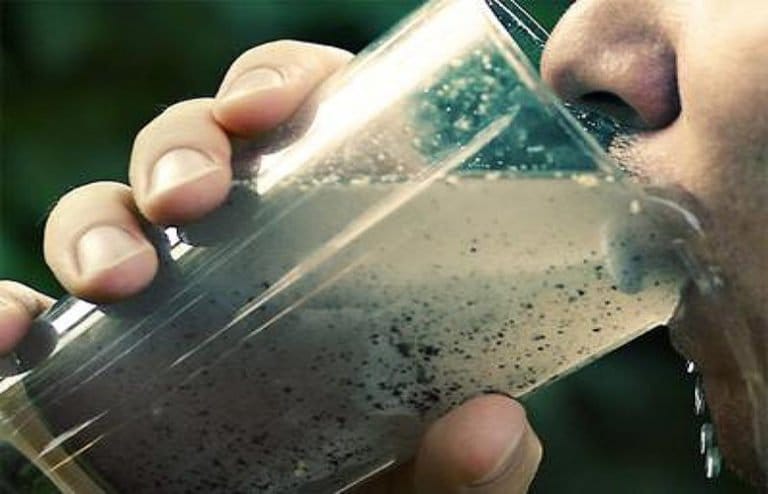Pure Earth survey suggest solutions to save 5.5 million cardiovascular deaths and the loss of 765 million IQ points caused by lead exposure
The Lancet Planetary Health published an article on September 12th 2023 led by World Bank researchers stating that the global cardiovascular disease mortality from lead exposure of 5·5 million deaths in 2019 is six times higher than the earlier estimate (0·85 million) in GBD (Global Burden of Disease) 2019. This is close to the number of estimated global deaths from PM 2·5, ambient and household air pollution combined (6·45 million), and more than three times the number of estimated global deaths from unsafe household drinking water, sanitation, and handwashing (1·66 million). The research estimated that worldwide, children younger than 5 years, lost 765 million IQ (Intelligence Quotient) points from lead exposure. The new research also estimates the lead exposure impact on the economy, US$6.0 trillion is equivalent to 6·9% of 2019 global gross domestic product.
Drawn from the latest 12th September Lancet paper, in the year 2019, approximately 1 million/10 lakhs or 19% of global estimated adult deaths from cardiovascular disease associated with lead exposure, were in India. India lost up to 154 million/15.4 crore or 20% of the total estimated IQ points lost in children under the age of five. The financial cost of lead exposure to India was US$259 billion, equivalent to 9% of India’s 2019 GDP.
Pure Earth as a response to this published paper released the results of a 25-country survey testing over 5,000 products for lead, identifying sources of this pervasive lead health threat. From India, investigators collected products from marketplaces in 3 states, namely Maharashtra, Tamil Nadu and Uttar Pradesh. The products most commonly contaminated with lead in India are aluminum cooking pots, toys, paint, spices and kohl eyeliner.
Suggested Quotes –
Lead man of India, Dr Thuppil Venkatesh, shared his concern, saying “lead exposure not only causes economic damage, reduction in IQ and pushes the poor into deep poverty. This Lancet paper is a cautionary tale for public health officials and physicians around the world, particularly those in cardiology. The data implies that lead exposure levels should be taken into consideration while dealing with cardiovascular disease, and it may be necessary to take remedial measures to provide the best possible care to patients. This could involve eliminating or significantly reducing exposure to lead products that could cause high blood lead levels.”
Primary author of The Lancet article, Bjorn Larsen says,“Our study indicates that the damaging health effects from lead exposure are even greater than we previously thought and that they come at a very high economic cost, especially in low- and middle-income countries…consequently, improved quality of blood lead level measurements, lead exposure identification, research, policies, and practices are very urgently needed to address that burden.”
Lavanya Nambiar, Pure Earth India’s Acting Country Director says, “If the overall high number of people with elevated blood lead levels, associated IQ loss and deaths reported in this lancet paper are true, this high scale of lead impact cannot be solely attributed to previously thought, industrial sources of lead, such as battery recycling. From Pure Earth’s 25 country survey, it is evident that everyday household items, consumer products, and contaminated food items all contribute to widespread lead poisoning. To solve lead pollution and save lives we need to monitor and stop lead contamination in our cookware, toys, paints, foods, spices and other products that could cause exposure. Thankfully, practical solutions are available that involve monitoring lead prevalence through blood lead testing, analysing exposure sources, and addressing the key sources identified with targeted interventions to reduce lead exposures and developing stakeholders capacities to enact the critical policies.”
Currently, the spending on lead within development aid is very small – around $10 million. Comparing this to HIV (almost $10 billion) and malaria (over $2 billion), clearly there needs to be more investment in this area globally.
Sandeep Dahiya, Director Advocacy and Communications, Pure Earth, “This expanded understanding of lead exposure, its impacts and known solutions of lead pollution is a clarion call to action. Our preliminary cost analyses suggest that all types of lead mitigation interventions/solutions are highly beneficial and have a very good payback. Every dollar spent on spice mitigation, the benefits returned are over $20,000, which is a remarkable return on investment. Similarly, leaded paint regulation has been shown to yield returns of $1200. The donor community and governments across the world need to examine and begin investing in solutions to lead poisoning that are more aligned with the scale of its impact. Also, governments and development agencies investing in education, maternal and child health, heart disease and stroke, need to consider how damage from lead exposure may be undermining these investments.”
Annex:
Global Stats
- New research conducted by the World Bank and published today in The Lancet Planetary Health indicates exposure to lead caused 5.5 million adult deaths from cardiovascular disease and the combined loss of 765 million IQ points in children under the age of five worldwide in 2019.
- Up to 95% of the effects were in low and middle-income countries (LMICs)
- The global financial cost of lead exposure in 2019 was US$6 trillion, equivalent to 6.9% of global GDP. In LMICs, these costs accounted for more than 10% of GDP.
- Pure Earth released the results of a 25 country survey testing over 5,000 products for lead, to identify sources of this pervasive health threat.
- Investigators collected products from 70 marketplaces in 25 countries, including Armenia, Azerbaijan, Bangladesh, Bolivia, Colombia, Egypt, Georgia, Ghana, the Indian state of Maharashtra, the Indian state of Tamil Nadu, the Indian state of Uttar Pradesh, Indonesia, Kazakhstan, Kenya, Kyrgyzstan, Mexico, Nepal, Nigeria, Pakistan, Peru, the Philippines, Tajikistan, Tanzania, Tunisia, Turkey, Uganda, and Vietnam.
- The products most commonly contaminated with lead across the countries are aluminum cooking pots, toys, paint, spices and kohl eyeliner.
- Investment in proven solutions need to increase exponentially; Blood lead level surveillance and research identifying sources of lead exposure is a first step. Programs to reduce exposures can then be designed and implemented.
India Stats
- New research conducted by the World Bank and published today in The Lancet Planetary Health indicates exposure to lead in India caused 1 million/10 lakhs adult deaths from cardiovascular disease and the combined loss of 154 million/15.4 crore IQ points in children under the age of five in 2019.
- Up to 19% of estimated deaths were in India alone
- India accounts for up to 20% of total estimated IQ points loss in world children under the age of five.
- The financial cost of lead exposure to India alone in 2019 was US$259 billion, equivalent to 9% of India’s GDP.
- Pure Earth released the results of a 25 country survey testing over 5,000 products for lead, to identify sources of this pervasive health threat.
- From India, Investigators collected products from marketplaces in 3 states namely Maharashtra, Tamil Nadu and Uttar Pradesh
- The products most commonly contaminated with lead in 3 study states of India are aluminum cooking pots, toys, paint, spices and kohl eyeliner.
- Investment in proven solutions need to increase exponentially; Blood lead level surveillance and research identifying sources of lead exposure is a first step. Programs to reduce exposures can then be designed and implemented.























